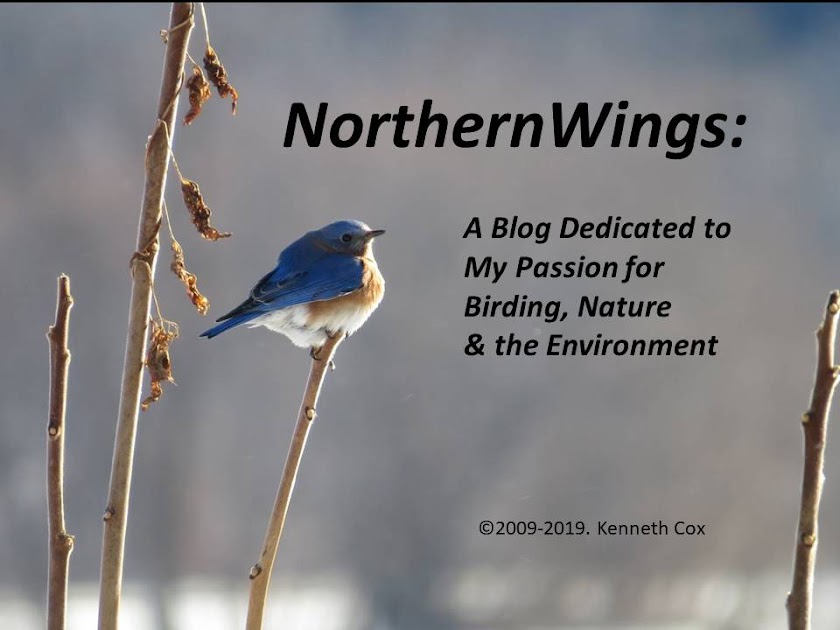Friday, June 4, 2010. Following information provided by Jim Mead in his May 30 post on VTBIRD announcing the third-year-in-a-row return of Clay-colored Sparrows to South Burlington, Vermont I decided to check out the site and hopefully add a new species to my life list. Jim's directions and advice were right on. Closing in on the location, that he precisely described, the sparrow's insect-like two-part buzz was very evident and within 5 minutes the singing male was spotted at close range perched near the top of a lone 10-15 foot tall white pine beside the trail. During my hour long stay I was able digiscope the male numerous times as well as get several glimpses of the more secretive female skulking about the thick brush near the trail.The habitat is a dense and diverse matrix of shrubs, small deciduous and coniferous (white pine, red cedar) trees, brambles and forbs. In the photo below the tall pine to the right side of the path is the one that the male most frequently sang from during my time at the site. The view is looking west.
Other birds present included Ring-billed Gull (fly-overs), Mourning Dove, Alder Flycatcher, Eastern Phoebe, Black-capped Chickadee, American Robin, Gray Catbird, Cedar Waxwing, Yellow Warbler, Common Yellowthroat, Eastern Towhee, Field Sparrow, Song Sparrow, Northern Cardinal, Brown-headed Cowbird, and American Goldfinch.
As a closing note, I fully agree with Jim's words of caution to birders to stick to the trail (Champlain Water District right-of-way) and not be tempted to step into the brush in pursuit of the sparrows or other species. I'll also refrain from pfishing. Excellent viewing and photographing can be had from the trail. It is highly likely the sparrows are nesting and any such activity could potentially result in nest abandonment and failure, as well deny other birders the rare opportunity to observe and hear this rare Vermont "breeder" in its natural habitat.

+6-4-10.jpg)
